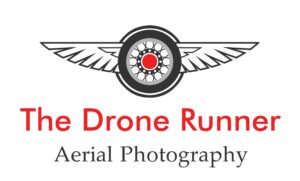From Wikipedia
Sick building syndrome (SBS) is a combination of ailments (a syndrome) associated with an individual’s place of work (office building) or residence. A 1984 World Health Organization report into the syndrome suggested up to 30% of new and remodeled buildings worldwide may be linked to symptoms of SBS. Most of the sick building syndrome is related to poor indoor air quality.
Sick building causes are frequently pinned down to flaws in the heating, ventilation, and air conditioning (HVAC) systems. Other causes have been attributed to contaminants produced by outgassing of some types of building materials, volatile organic compounds (VOC), molds (see mold health issues), improper exhaust ventilation of ozone (byproduct of some office machinery), light industrial chemicals used within, or lack of adequate fresh-air intake/air filtration (see Minimum Efficiency Reporting Value).
Symptoms are often dealt with after the fact by boosting the overall turn-over rate of fresh air exchange with the outside air, but the new green building design goal should be able to avoid most of the SBS problem sources in the first place, minimize the ongoing use of VOC cleaning compounds, and eliminate conditions that encourage allergenic mold growth.
Symptoms
Building occupants complain of symptoms such as sensory irritation of the eyes, nose, throat; neurotoxic or general health problems; skin irritation; nonspecific hypersensitivity reactions; and odor and taste sensations.[2]
Several sick occupants may report individual symptoms which do not appear to be connected. The key to discovery is the increased incidence of illnesses in general with onset or exacerbation within a fairly close time frame – usually within a period of weeks. In most cases, SBS symptoms will be relieved soon after the occupants leave the particular room or zone.[3] However, there can be lingering effects of various neurotoxins, which may not clear up when the occupant leaves the building. In some cases, particularly in sensitive individuals, there can be long-term health effects.
Causes
The causes of Sick Building Syndrome can be attributed to inadequate ventilation, chemical contaminants from indoor or outdoor sources, as well as biological contaminants. Many volatile organic compounds, which are considered chemical contaminants, can cause acute effects on the occupants of a building. “Bacteria, molds, pollen, and viruses are types of biological contaminants,” and can all cause SBS. The American Society of Heating, Refrigerating and Air-Conditioning Engineers (ASHRAE) recently revised its ventilation standard to provide a minimum of 15 cfm of outdoor air per person (20 cfm/person in office spaces). In addition, pollution from outdoors such as motor vehicle exhaust, can contribute to SBS.
Prevention
- Roof shingle cleaning non pressure removal of algae, mold & Gloeocapsa magma.
- Using Ozone to eliminate the many sources of such as VOC, molds, mildrews, bacteria, viruses and even odours.
- Pollutant source removal or modification to storage of sources.
- Replacement of water-stained ceiling tiles and carpeting.
- Use paints, adhesives, solvents, and pesticides in well-ventilated areas, and use of these pollutant sources during periods of non-occupancy.
- Increase the number of air exchanges, The American Society of Heating, Refrigeration & Air Conditioning Engineers recommend a minimum of 8.4 air exchanges per 24 hour period.
- Proper and frequent maintenance of HVAC systems
- UV-C light in the HVAC plenum
- Regular vacuuming with a HEPA filter vacuum cleaner to collect and retain 99.97% of particles down to and including 0.3 micrometers
Gender differences
There might be a gender difference in reporting rates of sick building syndrome because women tend to report more symptoms than men. Along with this, some studies have found that women have a more responsive immune system and are more prone to mucosal dryness and facial erythema. Also, women are alleged by some to be more exposed to indoor environmental factors, because they have a tendency to have more clerical work where they are exposed to unique office equipment and materials (example: blueprint machines), whereas men often have jobs based outside of offices.
History
In the late 1970s, it was noted that non-specific symptoms was reported by tenants in newly constructed homes, offices and nurseries. In media it was called “office illness”. “The term “Sick Building Syndrome” was coined by WHO in 1986 when they also estimated that 10-30% of newly built office buildings in the West had indoor air problems. Early Danish and British studies reported symptoms.
Poor indoor environments attracted attention. The Swedish Allergy study (SOU 1989:76) designated “sick building” as a cause of the allergy epidemic as was feared. In the 1990s, was therefore carried out extensive research into the “sick building”. Various physical and chemical factors in the buildings were examined on a broad front.
The problem was highlighted increasingly in media and was described as a “ticking bomb”. Many studies were performed in individual buildings.
In the 1990s “sick buildings” were contrasted against “healthy buildings”. The chemical contents of building materials was highlighted. Many building material manufacturers were actively working to gain control of the chemical content and to replace criticized additives. The ventilation industry advocated above all, more well-functioning ventilation. Other perceived ecological construction, natural materials and simple techniques as a solution.
At the end of the 1990s came an increased distrust of the concept of “sick building”. A dissertation at Karolinska Institutet in Stockholm 1999 questioned the methodology of previous research and a Danish study from 2005 showed these flaws experimentally. It was suggested that Sick Building Syndrome was not really a coherent syndrome. And it was not a disease to be individually diagnosed. In 2006 the Swedish National Board of Health and Welfare recommended in the medical journal Läkartidningen that “Sick building syndrome” should not be used as a clinical diagnosis. Thereafter, it has become increasingly uncommon to use terms such as “sick buildings” and “Sick Building Syndrome” in research. However, the concept remains alive in popular culture.


